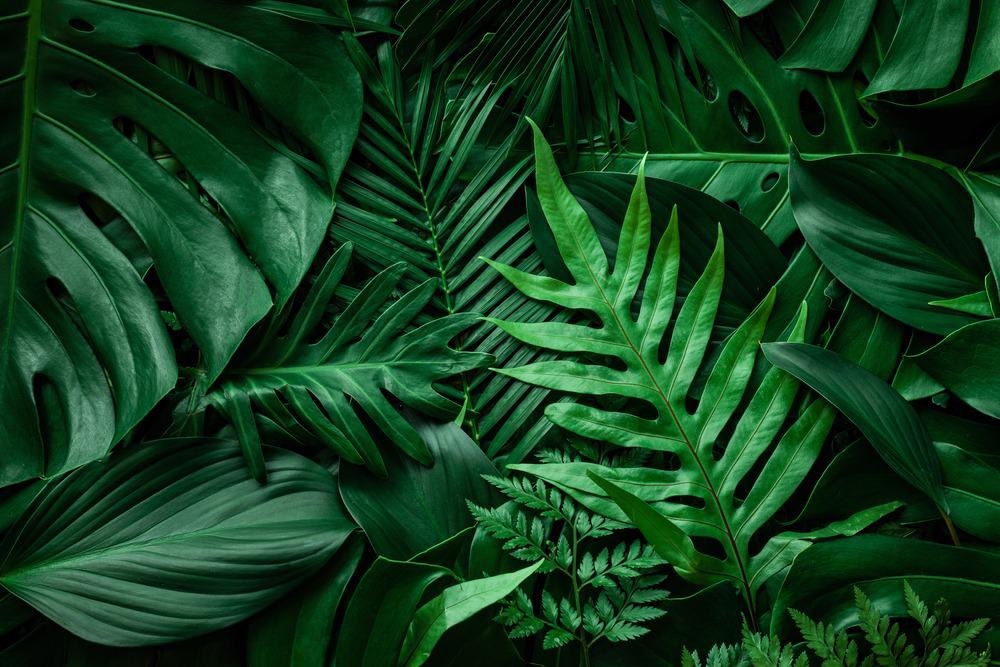Elastic electronic devices, like supercapacitors (SCs), require sheets with excellent strength and conductance. In a study published in the journal EcoMat, taking inspiration from the naturally existing leaf, an unsupported paper electrode was created using "mesophylls-like" MXene (Ti3C2TX) nanofilms, silver nanowires (Ag NWs) and "vein-like" cellulose strand for solid-state supercapacitor applications.

Study: Scalable manufacturing of leaf-like MXene/Ag NWs/cellulose composite paper electrode for all-solid-state supercapacitor. Image Credit: NABODIN/Shutterstock.com
The Emergence of MXenes
Scalable fabrication of nanoscale materials into unsupported electrode substances with excellent mechanical characteristics, superior electric conductance, and outstanding electrolytic behavior is crucial for their use in elastic electronic devices.
Due to their outstanding conductance and pseudo-capacitive characteristics resulting from rich functional groups on the surface (-O, -F, and -OH), MXenes have received a lot of focus as innovative two-dimensional early transition metallic carbonitrides.
Like in the case of graphene, MXene nanofilms are susceptible to stacking and regrouping due to the significant van der Waals attraction among neighboring sheets of MXenes, resulting in poor accessibility of electrolytic ions and severely reduced ionic diffusion kinetics.
Cellulose can Enhance the Performance of MXenes
Numerous attempts have been made to address the limitations of MXenes. For example, combining them with polymers like polyvinyl alcohol (PVA), PPy, and PANI may limit self-aggregation among MXene nanofilms.
Alternative carbon-based materials, like carbon nanotubes (CNTs), graphene, and carbon nanofibers, might be used to enhance the electrolytic characteristics of MXenes. Cellulose has been proven to improve the ultimate effectiveness of MXene-based products due to its availability and renewability.
For instance, bacterial cellulose (BC) was readily mixed with MXene using the solution technique in one previous study. The resulting composite electrodes exhibited a great tensile strength equal to 70 MPa and a good area-specific capacitance equal to 111.5 mF cm-2.
In another research, a MXene/bacterial cellulose self-supported sheet with 3D porous architecture was found to possess super-high capacitive performance while having an exceptional mechanical toughness of 43 MPa via freeze-casting following vacuum filtering.
Furthermore, when cellulose nanofibrils were constructed with MXenes as functional additions, the material attained a remarkable mechanical toughness of 341 MPa as well as a significant capacitive performance.
Despite significant advancements, employing cellulose as a functional addition does not allow for scalable manufacturing of MXene-based electrodes. Achieving synergized increases in numerous essential aspects remains challenging, including mechanical qualities, electric conductance, and capacitance.
Highlights of the Research
The team used a simple and rapid vacuum-aided filtering approach to create a super conductive composite paper taking inspiration from plant leaves. Microscale/nanoscale cellulose fibers served as the framework, whereas MXene nanofilms and silver nanowires (Ag NWs) served as functional addons.
The mechanically ground cellulose fiber had a higher aspect ratio and ample -OH groups. It could offer greater hydrogen bonding spots and stronger coupling, resulting in a hybrid paper with a greater specific area, a more densely ordered architecture, and significantly improved toughness.
Resembling the primary veins of a plant leaf, the interlaced cellulose fibers constituted the core framework of the composite paper. MXene nanofilms, like mesophylls in a leaf, could arrange themselves on the surface of cellulose fibers and fill the space among fibers, facilitating electrolytic accessibility and storing the charges created by the entire structure.
Key Findings
Using a quick and scalable vacuum-aided filtering technique, microscale/nanoscale cellulose fibers, MXene nanofilms, and Ag NWs were evenly combined to produce a superconductive PMxAg hybrid paper having a leaf-like hierarchic architecture.
MXene nanofilms can readily curl around cellulose filaments by generating numerous hydrogen linkages. At the same time, silver nanowires can interpenetrate through the MXene/cellulose structures, producing a bioinspired leaf-like nanoscale architecture having an intertwined and highly conductive three-dimensional framework.
As a result, the electrical and mechanical characteristics of nanocomposite paper were greatly improved. The powerful interactions and three-dimensional structure ensured a quick charge transportation route and a rapid charge/discharge operation, which significantly added to the composite paper's exceptional electrolytic characteristics.
Consequently, the PMxAg nanocomposite paper electrode achieved a significant gravimetric capacitance equal to 505 F g-1 at a scanning speed of 10 mV s-1, which is the greatest amongst hitherto described MXene-based electrodes.
This technique for developing electrode materials proposed in this study proved quite successful and inexpensive for achieving optimal charge transfer and high-performing SCs, indicating enormous promise for forthcoming flexible electronic devices.
Reference
Tang, H., Chen, R., Huang, Q., Ge, W., Zhang, X., Yang, Y., & Wang, X. (2022). Scalable manufacturing of leaf-like MXene/Ag NWs/cellulose composite paper electrode for all-solid-state supercapacitor. EcoMat. Available at: https://doi.org/10.1002/eom2.12247
Disclaimer: The views expressed here are those of the author expressed in their private capacity and do not necessarily represent the views of AZoM.com Limited T/A AZoNetwork the owner and operator of this website. This disclaimer forms part of the Terms and conditions of use of this website.